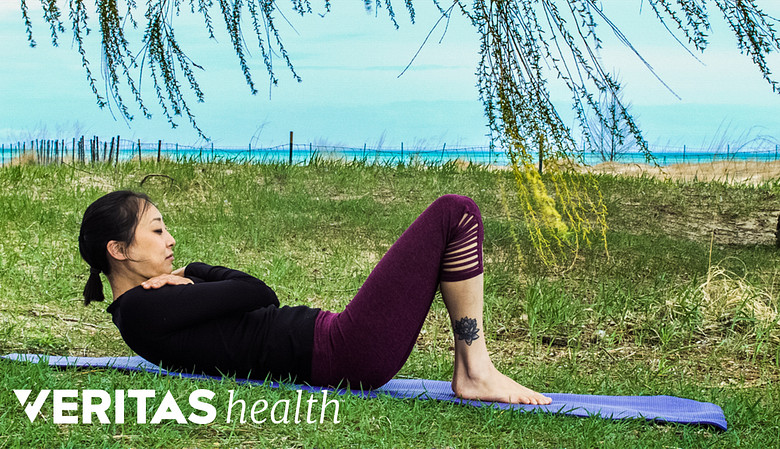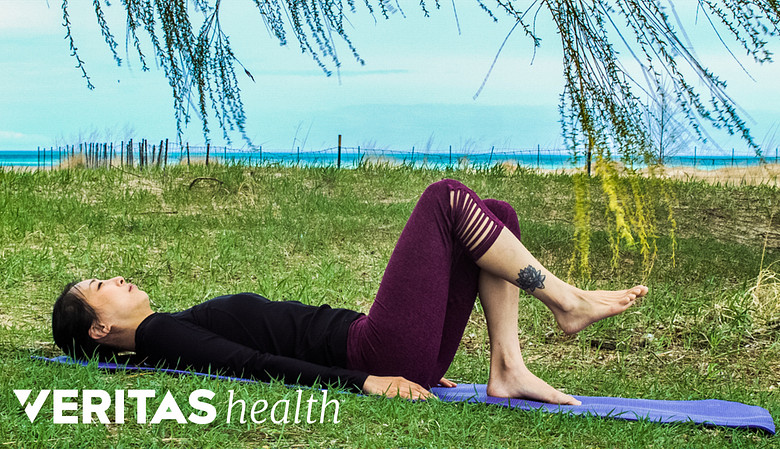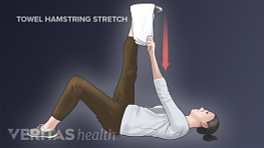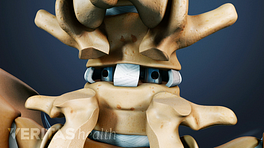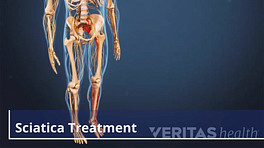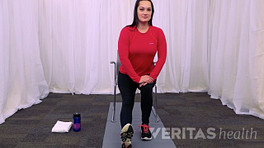Exercise therapy may be useful in relieving lower back pain and sciatic nerve symptoms in the leg resulting from low-grade lumbar isthmic spondylolisthesis. A low-grade isthmic spondylolisthesis occurs when 1% to 50% slippage occurs between two adjacent vertebrae. 1 Tenny S, Gillis CC. Spondylolisthesis. [Updated 2019 Mar 27]. In: StatPearls [Internet]. Treasure Island (FL): StatPearls Publishing; 2019 Jan-. Available from: https://www.ncbi.nlm.nih.gov/books/NBK430767/ For more advanced isthmic spondylolisthesis, it is recommended to consult a physician for appropriate treatment.
An exercise program for low-grade spondylolisthesis is typically controlled and the intensity is gradually increased over time. Taking pain medications and using heat/ice therapy to control the pain and inflammation may provide a tolerable pain level to participate in therapeutic exercises.
In This Article:
- Sciatica Exercises for Sciatica Pain Relief
- Exercise for Sciatica from a Herniated Disc
- Exercise for Sciatica from Spinal Stenosis
- Exercise for Sciatica from Degenerative Disc Disease
- Exercise for Sciatica from Isthmic Spondylolisthesis
Sciatica Exercises for Isthmic Spondylolisthesis
Targeted exercises for isthmic spondylolisthesis focus on strengthening the musculature of the lumbar spine and improving spinal posture to prevent forward slipping of the vertebra(e).
- The exercises to treat isthmic spondylolisthesis pain usually include flexion-based (forward-bending) strengthening exercises that stabilize the lumbar spine and the core.
- The goal of this flexion-based sciatica exercise program is to teach the lumbar spine to remain stable when bent forward and preventing the vertebral slippage from occurring.
The hamstrings and quadriceps muscles of the thigh are also worked in these exercises.
See Physical Therapy and Exercise for Sciatica
Strengthening Lower Back Exercises
Sciatica exercises for isthmic spondylolisthesis often require specific hands-on instruction from a physical therapist or other trained medical professionals to ensure accuracy of exercise form and prevent further trauma.
The following lower back strengthening exercises are usually a part of the initial treatment plan for this condition.
Pelvic tilt
Start by lying on the back.
- Slowly bend both knees.
- Flatten the back by tightening the lower stomach muscles and pulling the navel in and toward the sternum.
Hold this position for 10 to 20 seconds, then relax the muscles. Aim to complete a set of 10 pelvic tilts to strengthen the abdomen and lower back muscles.
Curl-ups
The curl-up abdominal exercise primarily works on strengthening the core muscles.
- Slowly bend both knees with feet flat on the floor.
- Fold both arms across the chest and hold a pelvic tilt.
- Gently lift the head and shoulders off the floor.
Hold for 2 to 4 seconds and slowly lower to the starting position. As strength builds, aim to complete 2 sets of 10 curls. Do not attempt to lift the head up too high. If neck pain occurs, place the hands behind the head to support the neck.
Hook-lying march
Hook lying march exercise helps improve core stability and support.
Start by lying on the back.
- Tuck both arms to the side and hold a pelvic tilt.
- Slowly raise alternate legs 3 to 4 inches from the floor (similar to a marching motion).
Read more about Spondylolisthesis Treatment
Aim to march for 30 seconds. Repeat for 1 or 2 more sets, with 30-second breaks in between repetitions.
Doctors and therapists may recommend wearing a back brace while performing the exercises to provide additional spinal support.
- 1 Tenny S, Gillis CC. Spondylolisthesis. [Updated 2019 Mar 27]. In: StatPearls [Internet]. Treasure Island (FL): StatPearls Publishing; 2019 Jan-. Available from: https://www.ncbi.nlm.nih.gov/books/NBK430767/

